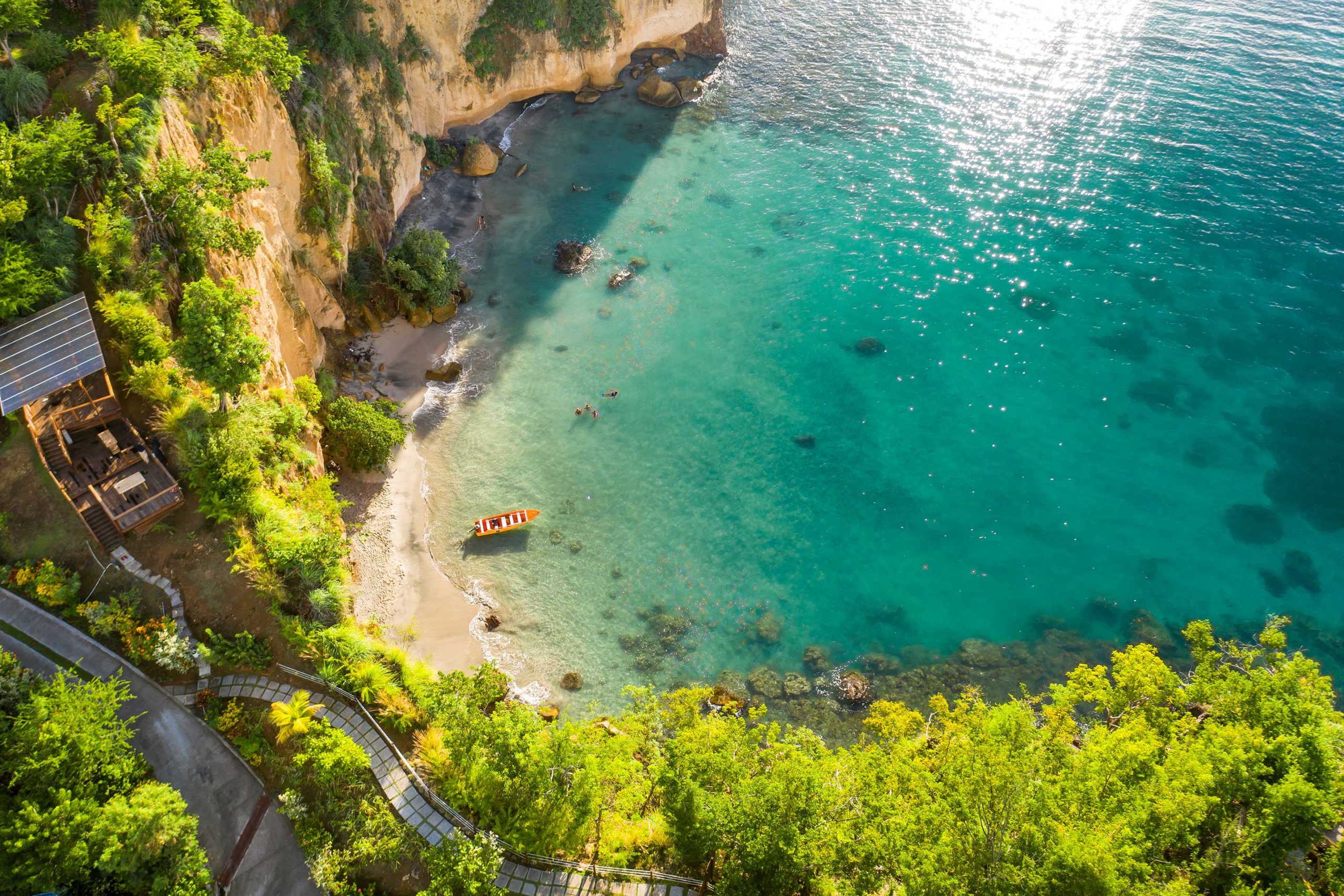Nearly all countries in the Caribbean boast several gorgeous beaches. However, there is one country that offers tourists and future residents more than beautiful waters and powder-fine sands: Dominica.
Dominica has several parks, unspoiled rainforests, forest reserves, and volcanic landscapes which makes it the perfect place for hikers, adventurists, and naturalists. The country also has a number of waterfalls, lakes, rivers, and hot springs that’ll satisfy your desire to go swimming and partake in other water activities.
Lastly, although Dominica isn’t known for its beaches, the country still has some that are worth visiting. Most of these are excellent for snorkeling and diving.
Because of these reasons, Dominica is known as the “Nature Island of the Caribbean” and one of the best and well-known ecotourism destinations in the region.
Dominica’s Must-Visit Natural Attractions
If you are going to Dominica for a holiday or moving here through the Dominica Citizenship by Investment program, here are the five ecotourism spots you have to visit first:
Morne Trois Pitons National Park
As the most famous national park in Dominica and the biggest one to boot, the Morne Trois Pitons National Park, which is a UNESCO World Heritage Site, is teeming with mountains, a thick jungle, forests, waterfalls, hot springs, freshwater lakes, and thriving biodiversity.
Visiting this one place will give you a glimpse of and allow you to experience the natural wonders and rich wildlife of Dominica. This is because this national park is home to these must-visit attractions:
- Victoria Waterfall
- Trafalgar Falls
- Middleham Falls
- Boiling Lake
- Titou Gorge
- Emerald Pool
- The Valley of Desolation
There are two notable attractions in this park: the Valley of Desolation and the Boiling Lake. The Valley of Desolation is an area that has several boiling mud ponds, mini-geysers, and colored hot springs.
The Boiling Lake, on the other hand, is the second-largest boiling lake in the world and is characterized by its bubbling grey-blue water that is often shrouded by clouds of vapor.
Since the Morne Trois Pitons National Park is an enormous area that covers around 17,000 acres of land, a day won’t be enough to explore this place. Be prepared to walk and hike a lot since many of the attractions can only be reached on foot.
Papillote Tropical Gardens
Although this natural landmark is located in Morne Trois Pitons National Park, it deserves a separate section.
The Papillote Tropical Gardens is a go-to destination for artists, botanists, photographers, and anyone who wants to immerse themselves in the best that nature can offer.
This 10-acre area is home to a mineral-rich pool and a variety of plant life that includes indigenous orchids, begonias, and bromeliads, bamboo trees, and ginger blossoms.
While in the gardens, you will also encounter or get glimpses of different species of birds, butterflies, and frogs.
The Papillote Tropical Gardens is also home to the Rainforest Restaurant. While enjoying a meal or drink, you will enjoy wonderful views of the nearby mountains and valley.
Cabrits National Park
This national park is another place you have to put on top of your must-visit list as an ecotourist.
Located in Portsmouth, one of the most scenic peninsulas of Dominica, the Cabrits National Park is home to beautiful rainforests, swampland, and the remains of Fort Shirley, a British garrison built sometime in the 18th century right inside the jungle.
When you reach Fort Shirley, you will also get amazing views of Prince Rupert Bay.
The park also has black-sand beaches and coral reefs, which are great spots for snorkeling and diving.
The Cabrits National Park allows you to explore both land and sea, so be prepared to take on activities and adventures when you visit this natural destination.
Soufriere-Scotts Head Marine Reserve
If you’re excited to explore the stunning waters and sea life of Dominica, head to the Soufriere-Scotts Head Marine Reserve or SSMR, one of the three marine parks of the country. You will find Champagne Reef here, which has the most picturesque scenery over and underwater.
Champagne Reef is so named for the bubbling water constantly rising from volcanic thermal springs found on the ocean floor. It is one of the most unique diving and snorkeling spots in the world due to the bubbles and the gold-colored reefs.
Under the water, you will see a variety of fascinating marine life which includes trumpet fish, harlequin bass, Moray eels, scorpionfish, and various species of colorful lobsters, crabs, and snails.
Morne Diablotin National Park
This park, which is another UNESCO Heritage Site, is home to the highest volcano in Dominica, Morne Diablotin.
The park covers 8,242 acres of land and is home to the endemic Sisserou and Jaco parrots, two of the most fascinating species of birds in the country.
Morne Diablotin National Park also has several tropical forests, the most famous of which is the Syndicate Rainforest. If you want to spot other birds, go hiking on the Syndicate Nature Trail, a route that will take you through several birdwatching spots.
With the numerous natural tourist spots in Dominica, if you are a nature-lover, visiting this country only once won’t be enough. If you are retiring or thinking of buying a second home in the Caribbean, consider being a Dominica resident through their Citizenship by Investment program.
With a citizenship status, you can live in or visit this place anytime. You will enjoy several benefits that residents of Dominica have while still having access to the ones in your home country.
When coupled with the security of a traveler’s insurance, your adventures and nature travel in Dominica will be more fun and relaxing, too.
AUTHOR BIO:
Kal Kennard is a Partner at Citizens International, a white-glove specialist firm offering private client services necessary for citizenship investment into the Caribbean, North America and Europe. Based in the Caribbean for the past 15 years, she is an experienced consultant who works directly with many professional partners and advises clients worldwide.


Leave a Reply